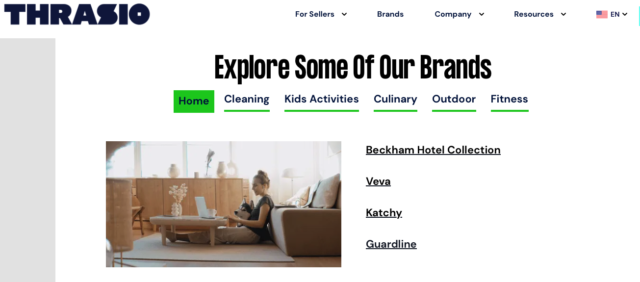“Amazon roll-ups” or “Amazon aggregators” were hot 3 years ago. Not anymore. Thrasio, one of the bigger companies in this space, recently announced it is filing for bankruptcy. Others have major problems, including Perch and Benitago. The founders of the aggregators are generally capable people, raised money from global VCs or private equity, and in many cases came up through the business of Amazon private labels and reselling. What made them fail?
If you’re not familiar with Amazon aggregators, here’s the way the businesses worked:
- Raise money from investors seeking to profit from the e-commerce wave.
- Purchase scores or hundreds of small/medium Amazon seller accounts, especially those with strong Amazon brands (that is, leveraging Amazon Brand Registry).
- Exploit economies of scale: Use a professional central team for back office, warehousing, sourcing, detail pages, and Amazon Advertising.
- Scale up the business.
- Reap profit.
I don’t have any insider knowledge of what happened at Thrasio, but I have operated an Amazon private label brand for years and understand where some of the risk lurks.
I can confirm that pandemic-era sales levels for many ASINs was not sustainable, rendering 2021 valuations unrealistic by late 2022. In other words, the aggregators overpaid for many of the brands based on hockey-stick growth through 2021. Moreover, just as sales were dropping, marketing costs were rising, particularly for Amazon Advertising and Facebook Ads.
In addition, economies of scale don’t work so well for giant catalogs with different supply chains and product requirements. I’m not saying that it happened for Thrasio, but it’s a real issue for anyone trying to scale across a range of SKUs. The company’s brands cover everything from cleaning solutions to kids activities, which have very different requirements when it comes to packaging, compliance, and shipping.

There’s another that’s playing into this slow-motion disaster for Amazon aggregators: Interest rates. Juozas Kaziukėnas of Marketplace Pulse laid out the problem in a recent Modern Retail article about Win Brand Group layoffs:
“If the thing you are using to run these aggregators is expensive capital, it’s near impossible to work. You are just servicing the debt… That is the knife that is killing many of these aggregators”
The thing that really surprises me about this news is the fact that “smart money” bought into the vision to the tunes of billions of dollars of investment, without realizing the risks and inherent challenges in the model. Via Crunchbase:
The bankruptcy filing marks a dramatic reversal for Thrasio, which once bore a $10 billion valuation after raising $3.4 billion from investors including Silver Lake, Oaktree Capital Management and Goldman Sachs Asset Management.
Did the MBAs and business analysts working for these Wall Street pros and Sand Hill Road VCs really think economies of scale would work so easily with a bunch of unrelated brands? Or that interest rates would remain so low? Or the e-commerce boom would extend after pandemic?
I don’t think the Amazon roll up model is dead, but certainly the next generation of Amazon aggregators should really focus on niches and do better due diligence and risk-adjusted projections.
